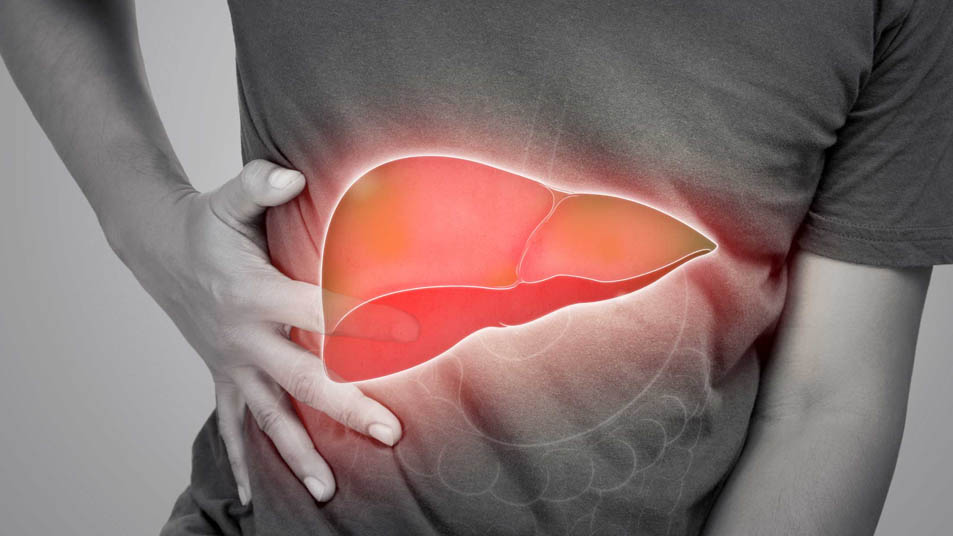
Liver disease refers to any condition that affects the liver's function or structure. The liver is a vital organ responsible for various functions, including filtering toxins from the blood, producing bile for digestion, and storing nutrients. The liver is a sizable and powerful organ which functions for
hundreds of vital processes. Its ability to remove poisons from your blood is among its most crucial roles. While your liver is well-equipped for this job, its role as a filter makes it vulnerable to the toxins it processes. The resources and capacity of your liver may be overtaxed by an excessive amount of
toxins. This may occur momentarily or over an extended length of time.
Types of Liver Diseases?
Liver disease progresses in roughly four stages :
1. Hepatitis.
2. Fibrosis.
3. Cirrhosis.
4. Liver failure.
Stage 1: Hepatitis :
Hepatitis is that which causes inflammation in the Liver tissues. It is an effort to overcome the infections and get the healing process going. An instantaneous and transient reaction such as acute hepatitis frequently achieves this. However, the inflammation also persists as long as the damage or
poisoning does. Hyperactive healing brought on by chronic hepatitis eventually leads to scarring (fibrosis).
Stage 2: Fibrosis :
As tiny bands of scar tissue accumulate over time, your liver will progressively stiffen up if you have Fibrosis. Your liver receives less blood flow through scar tissue, which limits its availability to nutrients and oxygen. This is how your liver's vitality begins to gradually decline. Remarkably, some amount of fibrosis is reversible. Your liver can repair itself, and if the damage slows down enough, your scars may fade, and the liver cells may renew.
Stage 3: Cirrhosis :
Cirrhosis is severe, permanent scarring in your liver. Fibrosis is no longer reversible at this point. Your liver's tissues can no longer renew when there are insufficient healthy cells for them to function with.
However, at this point, you can still reduce or even halt the harm. Your liver function will start to be affected by cirrhosis, but your body will try to make up for the loss, so you might not feel it right away.
Stage 4: Liver failure :
Liver failure sets in when your liver can no longer sufficiently process nutrients for your body, Because
your body is unable to make up for the losses, this condition is also known as "decompensated cirrhosis. "As liver functions begin to break down, you’ll begin to feel the effects throughout your body.
Although chronic liver failure develops gradually, it is ultimately deadly in the absence of a liver transplant. You need a liver to be alive.
Symptoms of Liver Disease :
Chronic liver disease often won’t cause symptoms in the early stages. But sometimes it begins with an episode of acute hepatitis. For example, if you get a viral hepatitis infection, there’s an acute phase before the chronic phase sets in. You might have a fever, stomachache or nausea for a brief
period while your immune system works to defeat the infection. If it doesn’t defeat it, it becomes a chronic infection.
Some other causes of liver disease might also begin with more acute symptoms or have occasional episodes of acute symptoms. Early symptoms of liver disease tend to be vague. They might include :
Jaundice (yellowing of the skin and eyes)
Swollen abdomen (ascites).
Digestive difficulties, especially with fats
Nausea or vomiting
Dark urine
Pale or tar-colored stools
Swollen ankles, feet, hands and face (edema)
Causes of liver disease :
Chronic viral hepatitis infections, such as hepatitis B and hepatitis C, can result in chronic hepatitis.
Alcohol abuse - Heavy alcohol use can cause acute or chronic hepatitis. It can lead to liver failure and cirrhosis if it persists for a long enough time.
Obesity leading to fatty liver disease - Metabolic conditions associated with obesity, high blood sugar and high blood lipids can cause excess fat storage in your liver, which can cause inflammation (non-alcohol related steatohepatitis).
Genetic disorders - Congenital (present at birth) conditions that obstruct or stall the flow of bile through your bile ducts can cause bile to build up and injure your liver, including biliary atresia and cystic fibrosis. Gallstones and biliary stricture are examples of non-congenital causes.
Extended exposure to hazardous substances or certain pharmaceuticals - Prolonged
exposure to hazardous substances, including industrial chemicals or narcotics, can result in acute or chronic hepatitis.
Diagnosis for Liver Disease :
Diagnosis typically involves blood tests, imaging studies (like ultrasound, CT scans, or MRI), and sometimes a liver biopsy. Treatment depends on the specific type of liver disease but may include lifestyle changes (like diet and alcohol consumption), medications, or in severe cases, liver transplantation.
Early detection and treatment are crucial to managing liver disease and preventing complications like liver failure or liver cancer.
Blood tests : Liver disease symptoms, severity of liver disease, and liver failure may all be seen with a panel of liver function tests. These gauge the quantities of bilirubin, proteins, and liver enzymes in your blood. Blood testing might also reveal effects such decreased blood clotting, inflammation, or certain disorders.
Imaging tests : Liver's size, shape, and texture can be seen using an abdominal ultrasound, CT scan (computed tomography scan), or MRI (magnetic resonance imaging). This may show growths, fibrosis, and edema and inflammation.
Elastography : A unique kind of imaging test known as Elastography measures the degree of liver fibrosis or stiffness using MRI or ultrasonic technologies.
Endoscopy : Your doctor may seek for an Endoscopic Imaging technique if they need to view into your biliary tract. Endoscopy involves passing a tiny camera (endoscope) through your upper GI tract. They can view your bile ducts using ERCP or EUS from the endoscope.
Nuclear medicine imaging : A nuclear liver and spleen scan uses a gamma camera to detect a (harmless) radioactive tracer material that’s injected into your body. How your liver absorbs the tracer will highlight the areas that aren’t functioning normally.
Liver biopsy : A liver biopsy is a simple technique that involves removing a tiny sample of liver tissue for laboratory testing. Typically, a hollow needle can be used by a medical professional to collect the sample. You might need a liver biopsy to check for cancer or confirm cirrhosis and help determine the cause.
Treatment for Liver Disease :
Specific medicinal interventions are available for some liver disease types. Corticosteroids and immunosuppressants cure autoimmune disorders; antivirals treat viral hepatitis. But in many cases, lifestyle changes are the primary treatment for liver disease. Reducing the toxic load on your liver is
important with any type of liver disease, but essential for those caused by excess fat storage, alcohol or other toxins.
Early detection is essential to successfully treat liver disease before irreversible damage is done. However, regretfully, some people do not identify liver illness in time to stop it from getting worse. You may require extra therapies for problems such as portal hypertension or liver cancer if you already have liver failure or cirrhosis. You may eventually require a liver transplant if your liver is unable to
heal.
Medication : Acetaminophen overdose-induced acute liver failure can be reversed by acetylcysteine. But you have to take it quickly. Additionally, there are drugs that can counteract the effects of poisonings like mushrooms.
Supportive care : A hospital can treat your symptoms until the infection clears up if it is causing liver failure. The liver in certain situations may occasionally heal on its own.
Liver transplant : This might entail getting a portion of a live donor's liver or a liver from a deceased donor. After transplant, a portion of a healthy liver will enlarge to its typical size. The number of Americans waiting for a liver transplant far exceeds the number of livers available from deceased
donors.
Surgery : This entails having the damaged portion of your liver removed, a process known as a hepatectomy or liver resection. Your liver's healthy portion will grow back.
